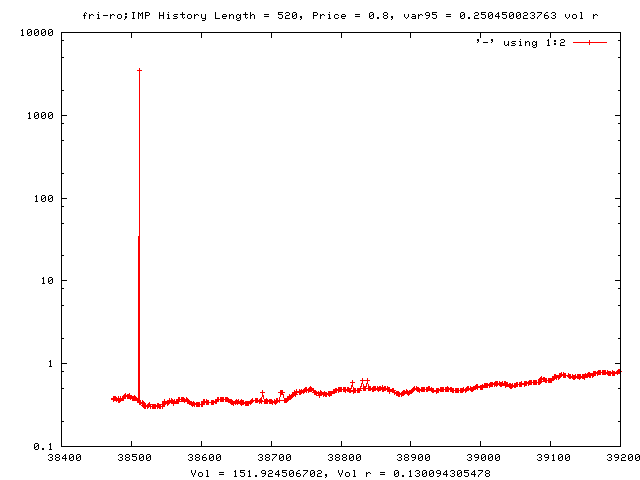An Introduction to Web Programming with WSGI
| Talk given at: | EuroPython 2007 |
|---|---|
| By: | Michele Simionato |
| Organization: | StatPro Italy |
| Date: | 2007-07-11 |
Introduction
This is as a talk for beginners, only knowledge of CGI and a bit of HTTP protocol is expected (non-beginners -> "Zope on a Paste")
- Have you ever heard of WSGI?
- Have you ever used WSGI?
- Have you used non WSGI-based Web frameworks?
Ok, now about me
- I started to do Web programming with Zope and Plone
- (never liked them)
- I flirted with Quixote, Twisted, CherryPy, mod_python
- (which are ok but ...)
- I got in love with WSGI at last EuroPython
- (I am still in love with it ;)
What I have done
- written various helpers to simplify the usage of WSGI;
- debug with WSGI, deploy with Zope strategy
- written various simple Web tools for internal usage at StatPro
- now we are going to start a major project with WSGI
WSGI
.png)
Short history of WSGI
- WSGI = Web Server Gateway Interface (Whisky for friends)
- the brainchild of Python guru Phillip J. Eby
- also input from Ian Bicking (paste) and others
- starting from Python 2.5, we have a WSGI web server in the standard library (wsgiref)
- there are plenty of simple and useful add-ons for WSGI applications out there (pylons ...)
- Guido likes it!
WSGI key concepts
WSGI application:
(env, resp) -> chunks of text
env = environment dictionary of the server; resp = function sending to the client the HTTP headers
WSGI middleware:
WSGI app -> enhanced WSGI app
Hello World
from wsgiref import simple_server
def app(env, resp):
resp(
'200 OK', [('Content-type', 'text/html')])
return ['<h1>Hello, World!</h1>']
server=simple_server.make_server('', 8000, app)
server.serve_forever()
The history plotter
It was easy to write a simple command line history plotter
- show live example
- but we were not happy with it
- because of installation issues, etc
- so we wanted to go on the Web
Going on the Web
- tool for internal usage on our intranet
- convenient to integrate with other Web tools
- usable also for non-techical users
- avoid installing and mantaining on every machine
- possibly we may open it to our other offices in the world
- we like the browser interface
Without a framework
- KISS
- no security concerns
- no scalability concerns
- no nice-looking concerns
- it must be EASY to change
- we want minimal learning curve
- we want no installation/configuration hassle
- we want no dependencies
- we want something even simpler than CGI, if possible!
Some code (I)
def app(env, resp):
form = getformdict(env)
if form.get('submitted'):
try:
fname = make_graph(form.get('code'), batch=True)
except Exception, e:
resp('500 ERR', [('Content-type', 'text/plain')])
return [traceback.format_exc()]
else:
resp('200 OK', [('Content-type', 'image/png')])
return file(fname)
Some code (II)
else:
resp('200 OK', [('Content-type', 'text/html')])
return [
'Try values such as <pre>fri-gb;AVE</pre>',
'<pre>fri-gb;TSCO</pre> <pre>fri-us;DELL</pre>',
'<form>', 'insert code ',
'<input type="text" name="code"/>',
'<input type="submit", name="submitted",'
' value="submit" />',
'</form>']
Some code (III)
def getformdict(env):
qs = env.get('QUERY_STRING')
if qs:
return dict((k, v[0])
for k, v in cgi.parse_qsl(qs))
else:
return {}
WSGI vs. CGI
- WSGI is simpler than CGI
- using wsgiref you don't require an external server
- you can keep sessions in memory
- WSGI scales better than CGI
- there is a large choice of wsgi servers (mod_wsgi, Twisted ...)
- there is a large choice of third party middleware
- it is relatively easy to turn a toy application into a serious one
The missing link
WSGI is a the missing link between the low-level mechanics of the Web and the high-level intricacies of the Web frameworks.

A common objection
- Python has too many Web frameworks because it is too easy to build a Web framework in Python
- WSGI makes building a Web framework even easier, the number of framework will increase
- => WSGI fails its goal!
- NOT TRUE
- integration is the key word
Object publishing (I)
class Example(object): def __init__(self, sitename): self.sitename = sitename def __call__(self): yield '<h1>%s: index page</h1>' % self.sitename yield 'goto <a href="./page1">page1</a><br/>' yield 'goto <a href="./page2">page2</a><br/>' yield 'goto <a href="subsite">subsite</a><br/>' def page1(self): yield 'page1' def page2(self): yield 'page2' page1.exposed = page2.exposed = True
Object publishing (II)
class WSGIObjectPublisher(object):
def __init__(self, root):
self.root = root
def __call__(self, env, resp):
return self.getsubpage(self.root,env,resp)()
def getsubpage(self, root, env, resp):
script_name = util.shift_path_info(env)
if not script_name: # We've arrived!
resp('200 OK',[('content-type','text/html')])
return root
...
Object publishing (III)
try:
page = getattr(root, script_name)
except AttributeError:
resp('404 Not Found',[('content-type','text/plain')])
return lambda:['missing page %r'%script_name]
exposed = getattr(page, 'exposed', False)
if not exposed:
resp('404 Not Found',[('content-type','text/plain')])
return lambda : [
'%r is not exposed!' % script_name]
return self.getsubpage(page, env, resp)
WSGI vs. frameworks
Pro:
- if you liked playing with Lego, you will be happy
- you have much more control and you are not forced to marry a technology
- you can learn a lot
- others ...
WSGI vs. frameworks
Contra:
- you can build your own framework with WSGI, but you have to debug it
- the existing WSGI frameworks are newer, there is less experience with them
- WSGI is not particularly Twisted-friendly
- others ...
And now middleware
No middleware in the standard library, but lots of useful middleware from third party sources. For instance, authentication middleware:
from paste.auth.basic import AuthBasicHandler
def only_for_pippo(env, user, passwd):
return user == 'pippo'
auth_app = AuthBasicHandler(
app, 'app realm', only_for_pippo)
Debugging WSGI apps
from wsgiref.simple_server import make_server
from paste.evalexception import EvalException
a, b = 1,0
def app(env, resp):
resp('200 OK',[('Content-type','text/html')])
return [str(a/b)]
make_server('',9090,EvalException(app)
).serve_forever()
Show evalexception
References
That's all, folks!
- http://wsgi.org/wsgi
- http://www.python.org/dev/peps/pep-0333
- http://pythonpaste.org/do-it-yourself-framework.html
- http://pylonshq.com/
(P.S. at StatPro, we are hiring! ;)
